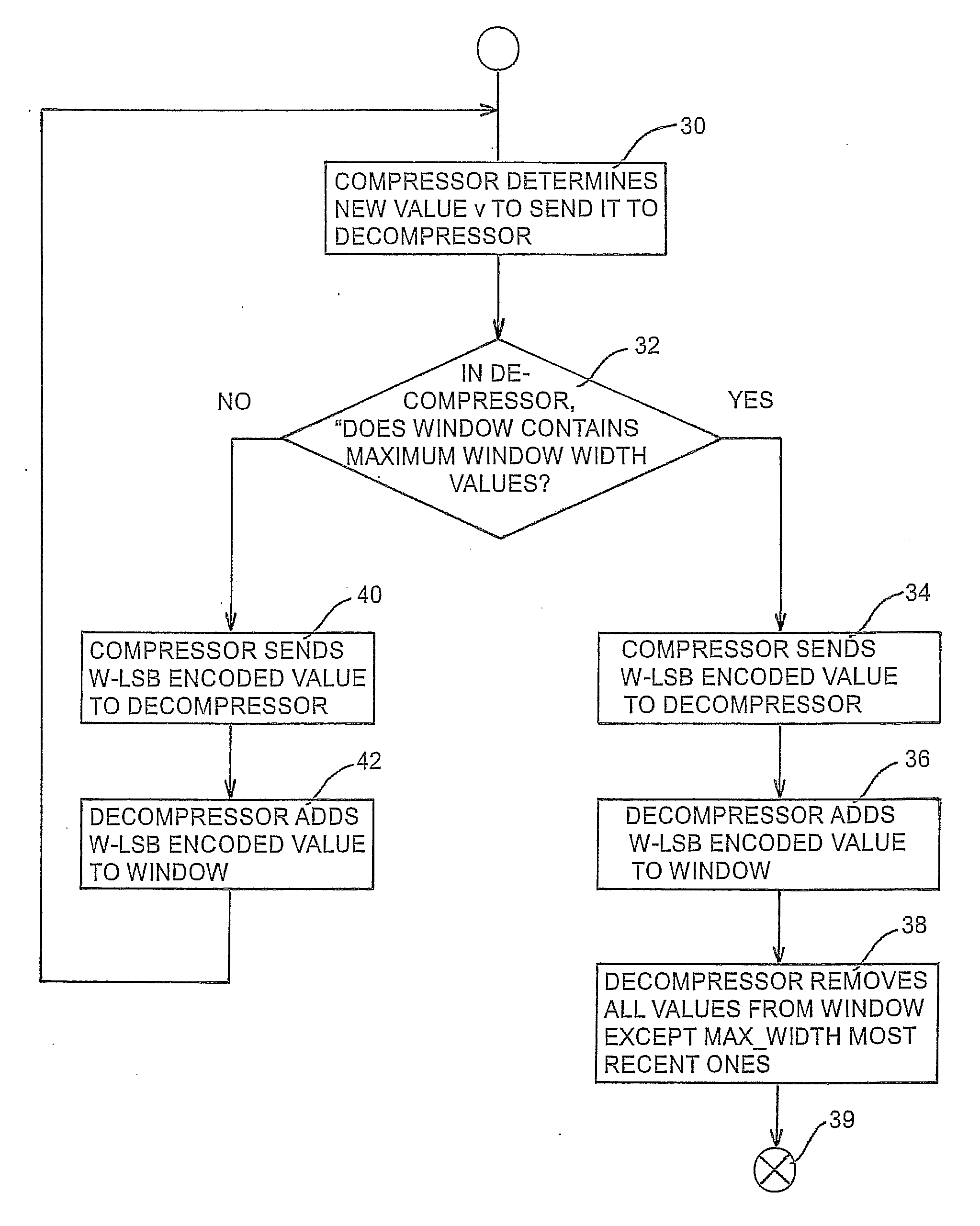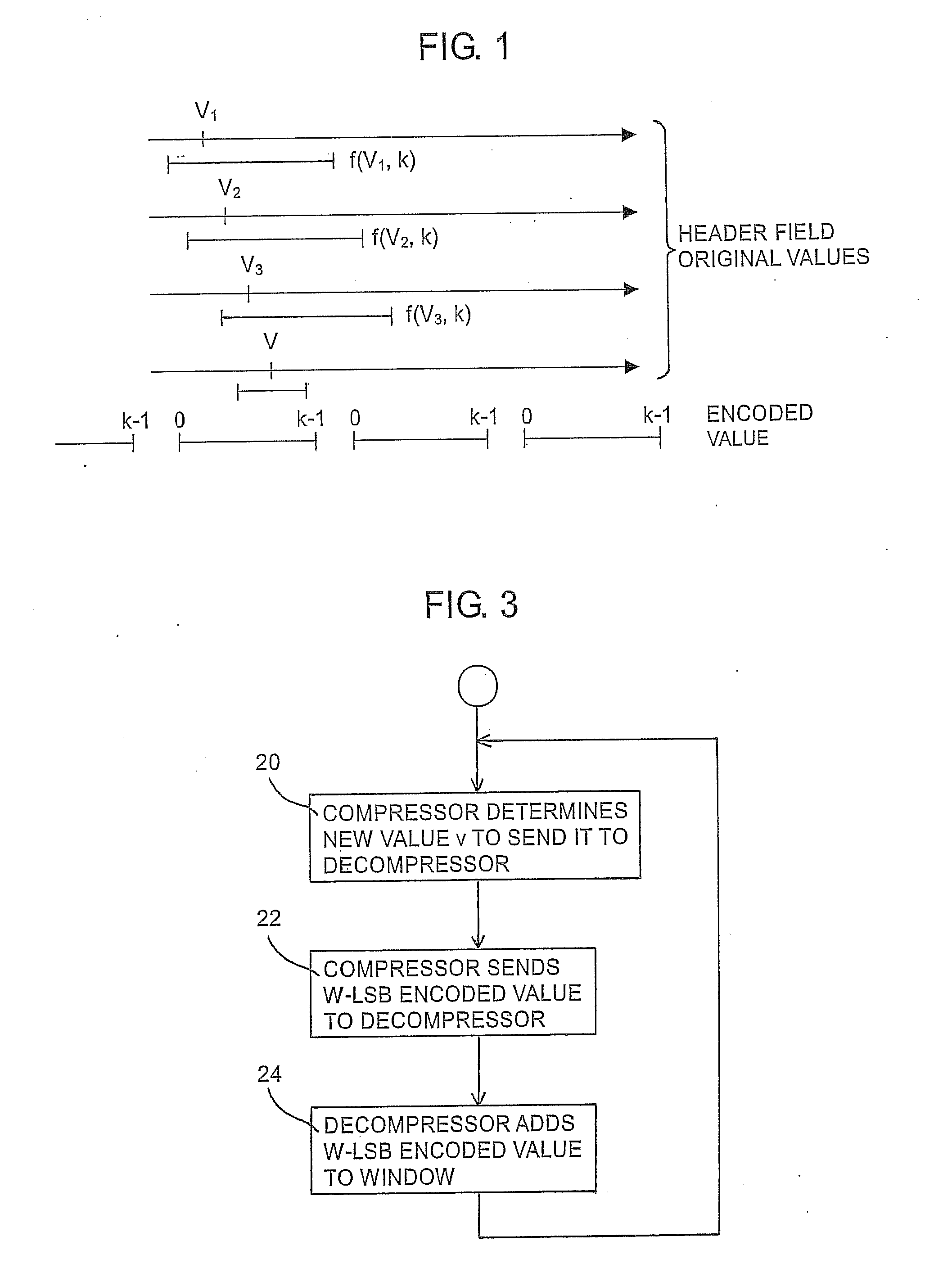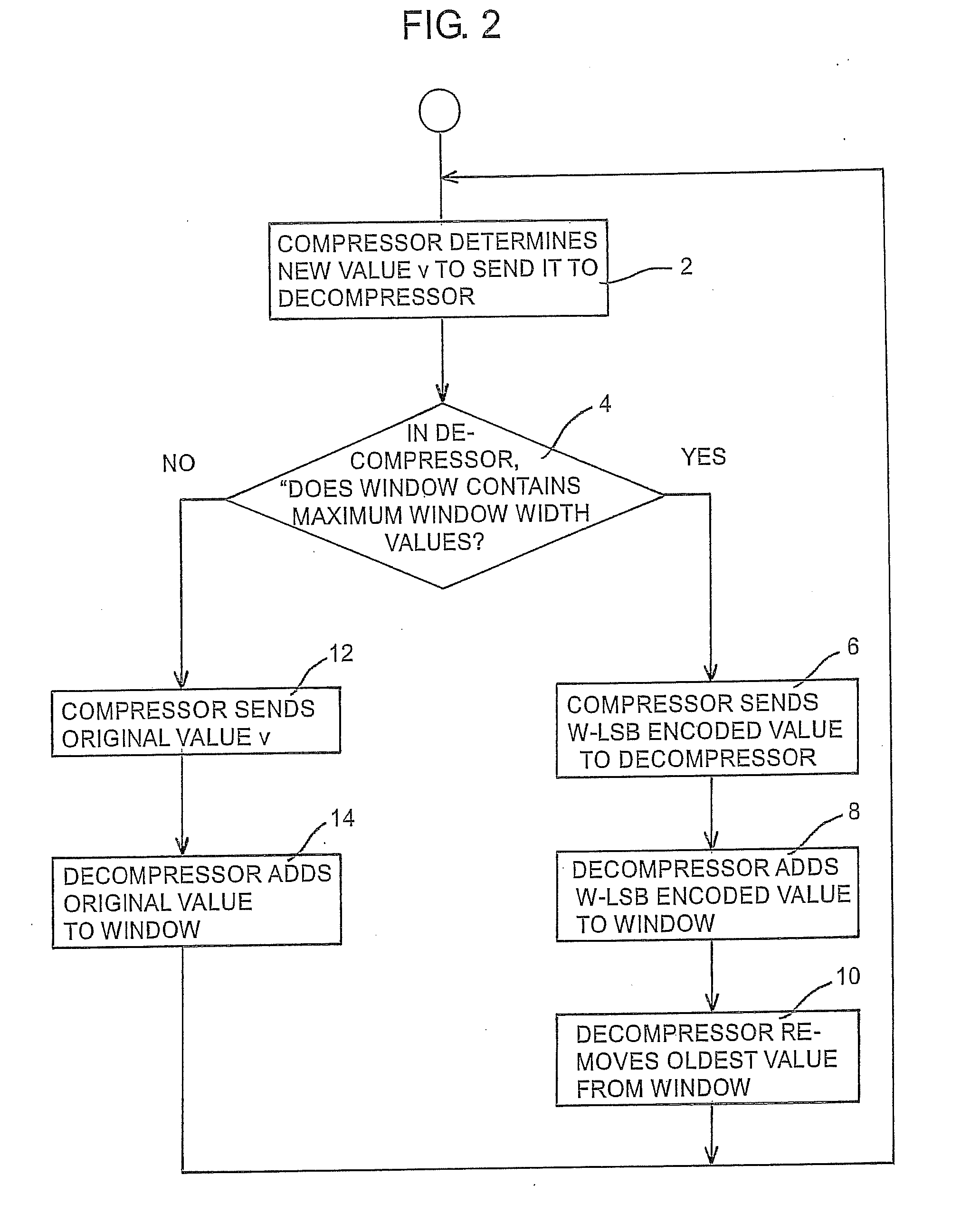Header compression optimization method during and after handovers in cellular communication network
- Summary
- Abstract
- Description
- Claims
- Application Information
AI Technical Summary
Benefits of technology
Problems solved by technology
Method used
Image
Examples
Embodiment Construction
[0064]The following description is made in the case where the IP header value to be compressed is either the RTP Timestamp (Real Time Protocol Timestamp) or the RTP Sequence Number (Real Time Protocol Sequence Number) of a packet data stream transmitted from a first cellular mobile terminal to a second cellular mobile terminal during a handover or mobility procedure in a cellular communication network. Both mobile terminals comprises a compressor and a decompressor adapted for implementing the optimized method according to the present invention.
[0065]The context of the compressor is the state that it uses to compress a header. The context of the decompressor is the state that it uses to decompress a header. Either of these or the two I combinations are usually referred to as “context”. The context contains relevant information from previous headers in the packet stream, such as static fields and possible reference values for compression and decompression. Moreover, additional inform...
PUM
 Login to View More
Login to View More Abstract
Description
Claims
Application Information
 Login to View More
Login to View More - R&D
- Intellectual Property
- Life Sciences
- Materials
- Tech Scout
- Unparalleled Data Quality
- Higher Quality Content
- 60% Fewer Hallucinations
Browse by: Latest US Patents, China's latest patents, Technical Efficacy Thesaurus, Application Domain, Technology Topic, Popular Technical Reports.
© 2025 PatSnap. All rights reserved.Legal|Privacy policy|Modern Slavery Act Transparency Statement|Sitemap|About US| Contact US: help@patsnap.com



